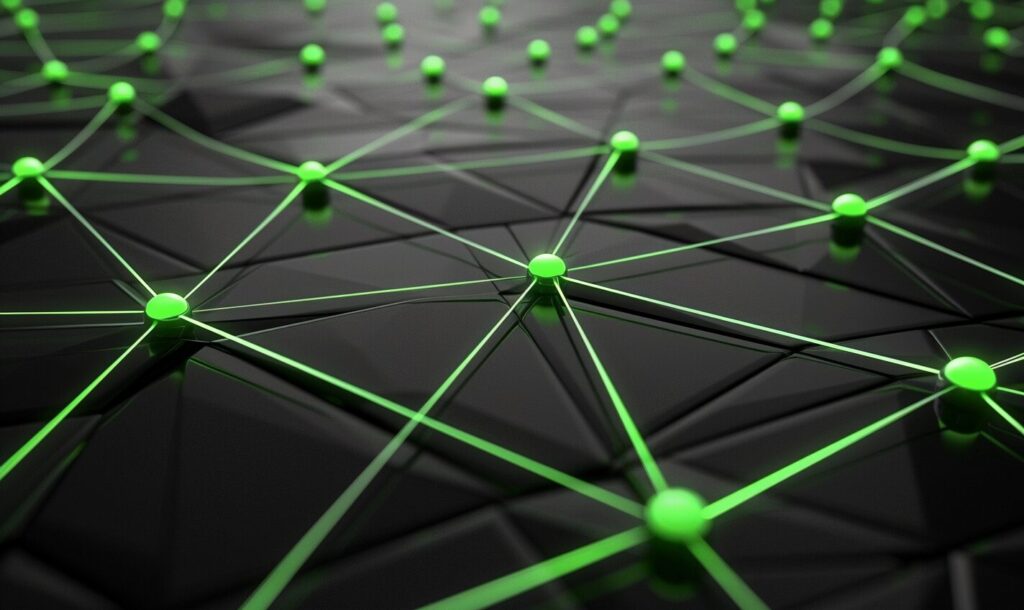What’s a computer network? We use them everyday for work, school, communication, entertainment and more, but many people don’t know how these networks actually wok.
Computer networks have become a central part of our daily lives in an incredibly short amount of time. At least 89% of American households have at least one personal computer today. In 1984, that number sat at just 8%.
Computer networks provide a substantial amount of the digital functionality most of us take for granted these days. So what’s a computer network, exactly?
What Does a Computer Network Do?
Computer networks provide the foundation on which all communication happens in the world of information technology. At their simplest, computer networks are groups of computers, connected together, using common communication protocols to exchange messages or data.
The first computer network came online in 1969 and served as a precursor to the internet we all know and use today. Known as ARPANET, it was developed by the Advanced Research Projects Agency (ARPA) and the U.S. Defense Department as a way for researchers at labs and universities to collaborate and share information. ARPANET stands for “Advanced Research Projects Agency Network.”
This was the first general-purpose and scalable computer network ever, but others followed in close succession.
Computer networks provide a very wide range of IT functionality, including:
- Exchanging communications using email, video chat, instant message, SMS and other platforms
- Creating a pool of shareable assets such as printers and scanners, storage servers, photocopiers and fax machines
- Sending and collaborating on files, including storing them in the cloud
- Maintaining databases of information and providing ongoing access
Today, the most widely used and best-known example of a public computer network is the World Wide Web. There are many other networks that are not open to the public and still others that take specific tools to access, such as using Tor to visit the Dark Web. Computer networks can be created, enlarged, expanded or merged at any time.
Types of Computer Networks
In network design, there are two main schools of thought — client/server networks and peer-to-peer (p2p) networks.
Client/server networks focus on centralized infrastructure, including servers, to which client devices like phones and PCs connect as needed. Meanwhile, with peer-to-peer networks, each device has the same functionality with no reliance on a centralized hub.
One example of a peer-to-peer network is the Weather Company’s p2p “mesh” network. The project allows individual mobile devices to communicate directly with one another, even without active Wi-Fi or cellular coverage.
Within these two major categories are several different and more specialized types of computer network, each with a different set of features, capabilities and uses.
The major computer network types are:
- Wide Area Network (WAN): These are computer networks which typically span a geographical area of 1 kilometer or more.
- Local Area Network (LAN): Local networks connect computers within a single building or campus, including personal dwellings, schools, corporate offices and public spaces.
- Personal Area Network (PAN): These networks focus on individual workspaces. They may include one or more computers as well as peripheral devices like smartphones.
- Enterprise Private Networks: Corporations and similar entities often set up private enterprise networks so that multiple office locations can share the same digital infrastructure and assets.
- Global Area Network (GAN): The internet is the most widely used example of a GAN. These networks span the whole globe, but they may also be private and hidden from the general public.
How Do Computer Networks Work?
Each computer network features several nodes connected together using physical cables, wireless internet or fiber optics. These nodes can be computers, switches, routers, tablets, wearables, smartphones, appliances and many other types of devices.
Computer networks abide by specific protocols. These determine the methodology used to send data and messages between nodes. Within each network, IP addresses function rather like physical addresses. Each node has a specific IP address which tells the network and the other nodes how to recognize and “talk to” it.
Routers and switches perform the tasks of routing messages and analyzing the content to determine the best way to deliver it.
Networks feature different types of layouts depending on the work being done and the desired functionality. Here are three of the major network topology designs:
- Star topology: Each node connects to a central hub using an independent connection. Data is transmitted directly to the receiving node.
- Bus topology: With this setup, a single network cable connects each node in a series. A message intended for the final node must pass through each of the preceding ones. It requires far less cabling than star topology, but each node becomes unreachable if the cable is compromised.
- Ring topology: Similar to bus topology, this is where a signal passes through a ring of nodes until it finds the correct recipient. The signal may pass through the ring multiple times if the transmission fails on the first attempt.
Computer networks may use physical connections, like Cat 5 or Cat 6 Ethernet cables and fiber optics, wireless connections over cellular or Wi-Fi, or a combination of each.
Computer Networks Today and Tomorrow
If you’ve been wondering, “What’s a computer network?” you should now have your answer. Networked technologies like the Internet and the Internet of Things are the present and future of human industry on earth. Tech insiders have been saying for years that the U.S. needs up to one million new IT professionals to meet the demand.
Adopting these technologies unlocks incredible personal and enterprise potential, but we also need robust talent pipelines to build and maintain these networks and keep progress moving.
Computer networks provide the functionality that billions of individuals rely on to conduct business, stay in touch, keep entertained or remain up-to-date with current events. Knowing a little more about how it works never hurts.
Recent Stories
Follow Us On
Get the latest tech stories and news in seconds!
Sign up for our newsletter below to receive updates about technology trends














